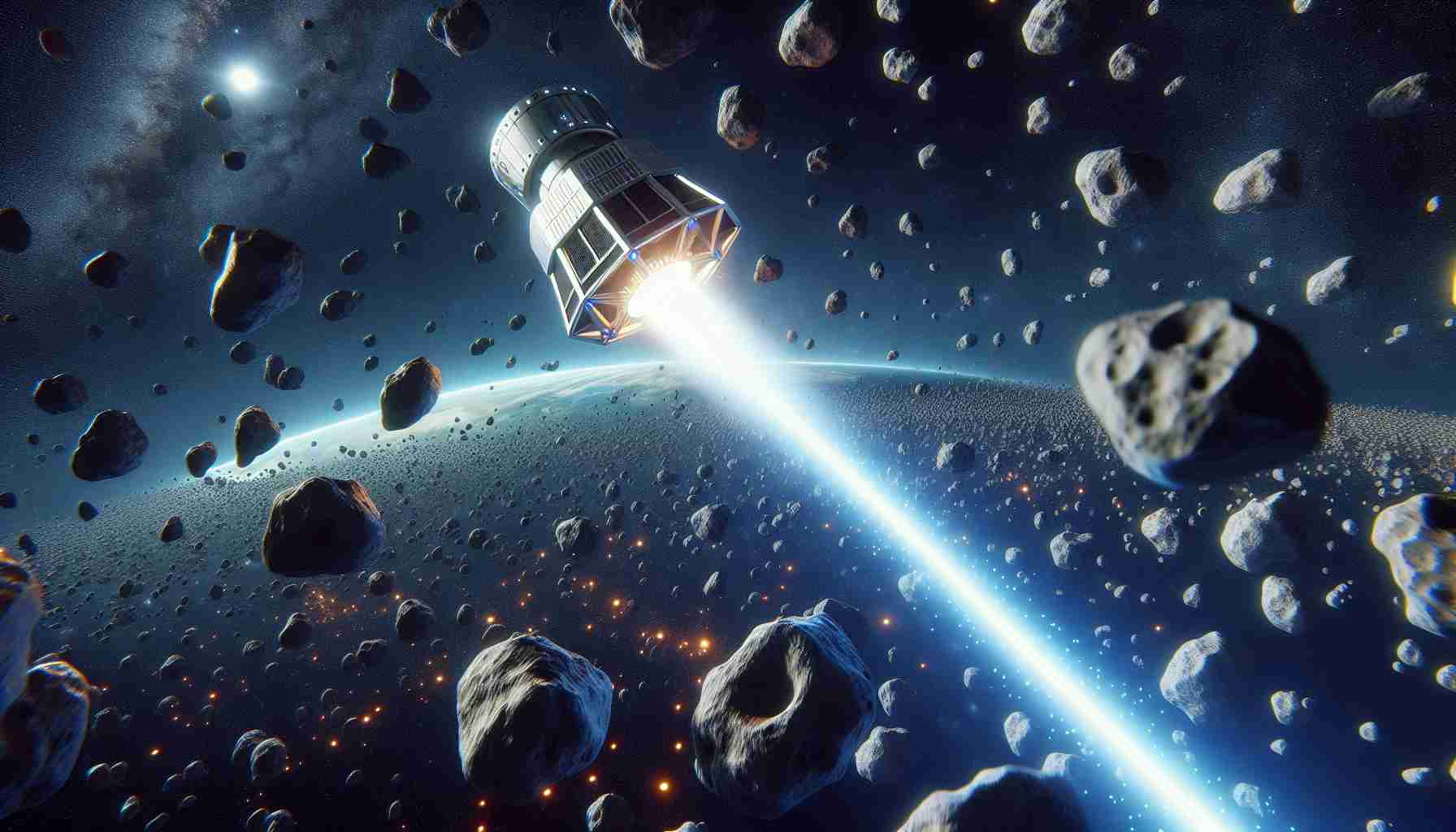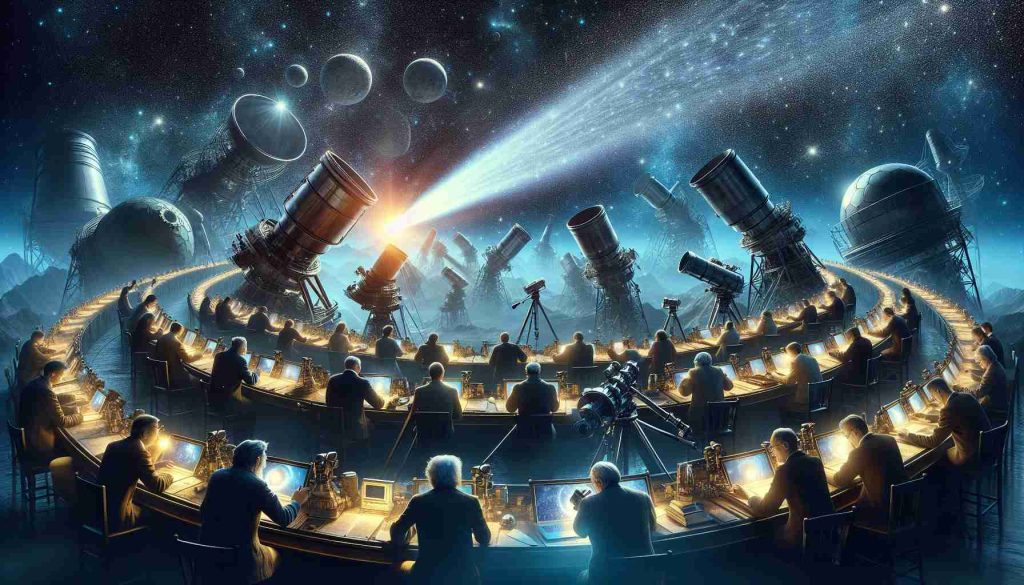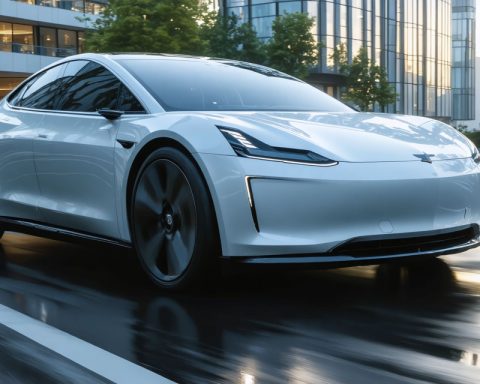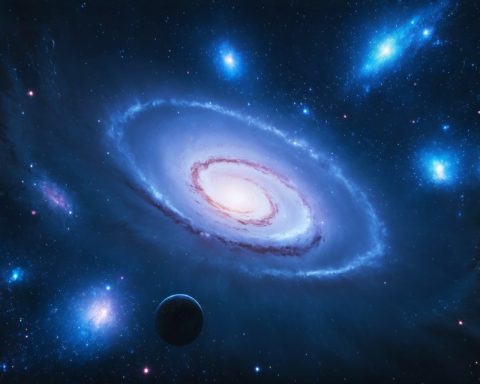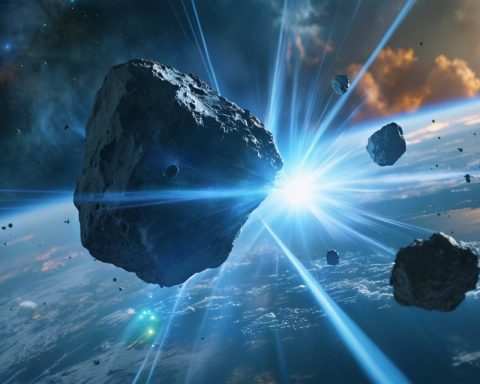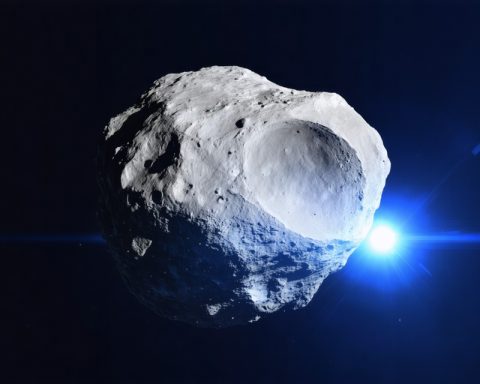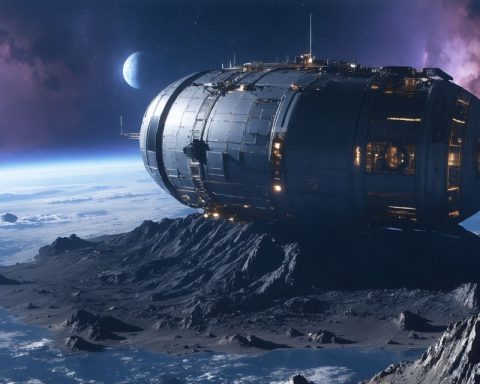Asteroids have long been the subject of science fiction and scientific concern, but new technologies are paving the way for extraordinary protections against these celestial threats. As we venture further into the 21st century, the possibility of harnessing cutting-edge technologies to defend our planet from potentially devastating asteroid impacts is becoming a thrilling reality.
Asteroid Deflection: A Game Changer
Recent advancements in space tech, like the successful test of NASA’s Double Asteroid Redirection Test (DART) mission, are offering promising methods to nudge asteroids off collision courses with Earth. Using kinetic impact techniques, these missions aim to change the trajectory of asteroids, providing a tangible method to prevent future collisions.
Mapping and Monitoring with AI
Artificial intelligence is now being integrated into asteroid monitoring systems, enhancing the ability to detect and track potentially hazardous asteroids. By leveraging AI’s data processing power, scientists can analyze vast amounts of astronomical data more efficiently, increasing the accuracy and speed of threat assessments.
Public-Private Synergy
The increasing collaboration between governmental agencies and private aerospace companies is accelerating the development of these technologies. Companies like SpaceX, Blue Origin, and others are contributing new ideas and resources, facilitating rapid advancements in asteroid tracking and deflection efforts.
As humanity stands on the brink of unprecedented technological capabilities, the once-catastrophic prospect of an asteroid impact is becoming more manageable. Our ability to protect Earth is evolving, offering exciting new prospects in planetary defense and ensuring a safer future for generations to come.
Asteroid Defense: Securing Earth’s Future
The advancements in asteroid defense not only protect Earth from potential cataclysmic impacts but also carry significant implications for the environment, humanity, and the economy. The integration of cutting-edge technologies in asteroid deflection and monitoring could transform our interaction with the cosmos and shape the future of our civilization.
Environmental Impact
While immediate asteroid threats are rare, the environmental impact of a major collision would be disastrous, triggering fires, releasing tons of dust and debris into the atmosphere, blocking sunlight, and drastically altering climate patterns. By developing robust asteroid defense systems, we can mitigate potential environmental catastrophes, ensuring the stability of ecological systems and the preservation of biodiversity essential for life on Earth.
Humanity’s Safety and Psychological Security
The ability to predict and deflect an asteroid not only safeguards human lives but also provides psychological reassurance. The shadow of an unpredictable asteroid impact has historically instilled existential dread in humanity. Knowing that we possess the capability to avert such disasters boosts global morale and unites humanity around a shared goal—protecting our planet and species.
Economic Ramifications
Investing in asteroid defense is not just a matter of safety; it also spurs economic development. Innovations in space technology can generate new industries, create jobs, and lead to advancements in material sciences and engineering. Furthermore, the collaboration between public and private sectors, as seen with entities like SpaceX and Blue Origin, fosters economic growth by promoting competitive innovation and accelerating technological breakthroughs.
Connections to the Future of Humanity
The advancements in asteroid monitoring and deflection reflect humanity’s increasing capability to manage extraterrestrial threats. This technology could serve as a catalyst for deeper space exploration, establish systems for resource extraction from near-Earth objects, and play a crucial role in terraforming or colonization efforts. By learning to manipulate asteroids, humanity opens new frontiers and possibilities, leveraging celestial bodies for resources and expanding our presence in the solar system.
In conclusion, the strides taken in asteroid defense technology herald a new era of planetary protection. This not only ensures Earth’s safety but also demonstrates our growing prowess in space technology. As we continue to pursue these advanced capabilities, the potential for a thriving relationship with the cosmos becomes increasingly attainable, shaping a sustainable and resilient future for the world.
The Future of Planetary Defense: Innovations in Asteroid Protection
As technological advancements continue to accelerate, humanity’s efforts to protect Earth from potential asteroid impacts are entering an exciting new phase. Here’s a closer look at the recent breakthroughs and emerging trends in asteroid defense.
Innovations in Kinetic Impact Techniques
The success of NASA’s Double Asteroid Redirection Test (DART) mission marked a significant milestone in planetary defense. This mission demonstrated that kinetic impact techniques could effectively alter an asteroid’s course. Upcoming missions are expected to refine these methods, focusing on precision targeting and the use of autonomous navigation systems to enhance impact accuracy.
AI-Powered Asteroid Tracking: The Next Frontier
AI’s role in asteroid detection and monitoring is quickly becoming indispensable. By utilizing machine learning algorithms, scientists can process and analyze large datasets from telescopes across the globe. This innovation not only boosts the accuracy of threat detection but also allows for faster response times, potentially averting disaster with greater efficiency than ever before.
Collaborations Boosting Technological Progress
The synergy between governmental space programs and private aerospace companies is forging new paths in planetary defense. Organizations like SpaceX and Blue Origin are at the forefront of space exploration, providing crucial resources and technology for asteroid monitoring and deflection initiatives. Their involvement is reducing development costs and accelerating the pace of innovation.
Pros and Cons of Current Systems
Pros:
– Advanced Monitoring: Improved threat detection with AI-driven systems.
– Proven Deflection Methods: Validation of kinetic impact as a viable defense weapon.
– Collaborative Efforts: Accelerated advancements due to government and private sector synergy.
Cons:
– Complex Coordination: Requires seamless global collaboration.
– Cost Considerations: High financial investment for research and missions.
– Technological Dependence: Relies heavily on cutting-edge, yet-to-be-perfected technologies.
Future Predictions and Insights
Experts predict a surge in international cooperation for space initiatives aimed at planetary defense. As space startups proliferate, innovative solutions and business models will likely emerge, challenging traditional approaches and offering cost-effective alternatives. Furthermore, new regulations and policies will be developed to oversee and manage these cooperative efforts globally.
Predictive modeling and simulations will continue to improve, potentially allowing humanity to not only anticipate asteroid threats but fully prevent them with new strategies like gravitational tractors or solar sails.
Sustainability in Space Initiatives
Ensuring the sustainability of space operations is becoming increasingly important. As companies and countries ramp up their space activities, developing eco-friendly and reusable technologies will become a priority. This shift not only promotes responsible space exploration but helps preserve Earth’s orbital environment from debris caused by deflection missions.
As we continue to navigate these scientific frontiers, one thing remains clear: the innovations and collaborations of today are making the once-catastrophic threat of an asteroid impact a more manageable challenge, allowing us to secure a safer future for our planet.
